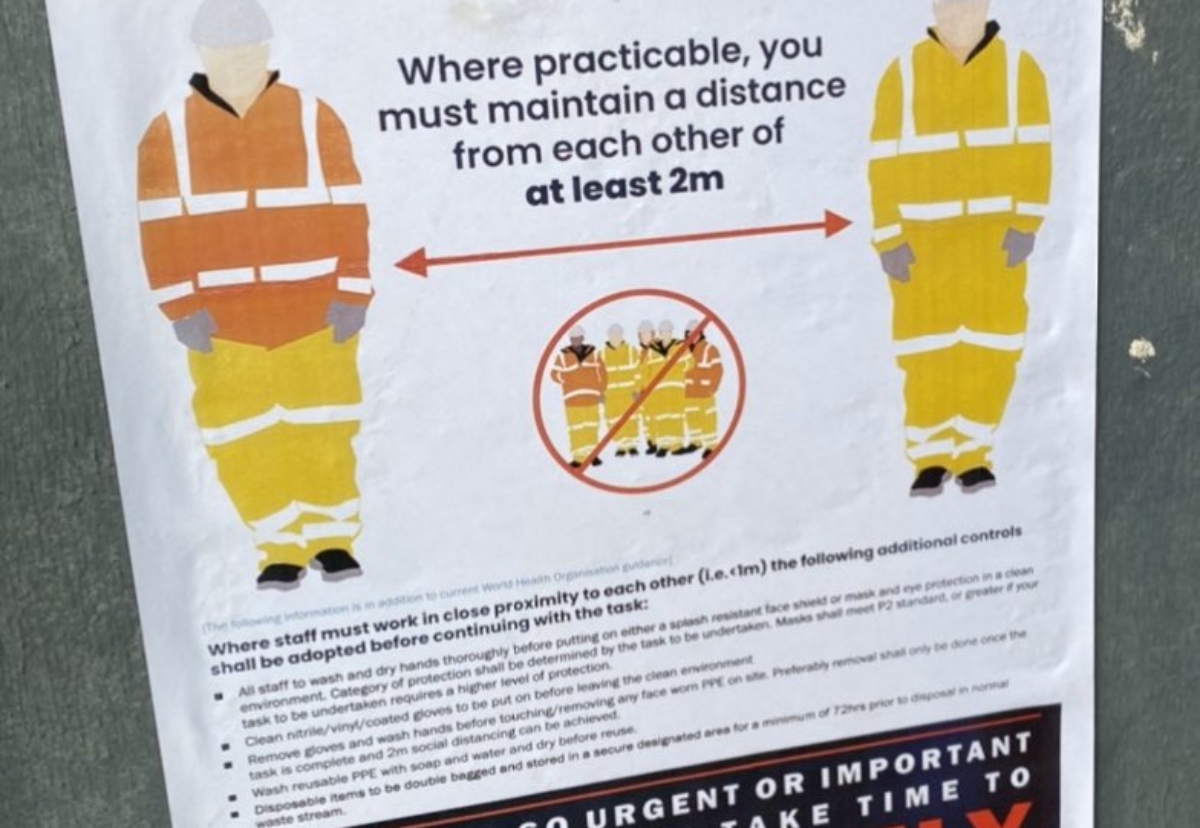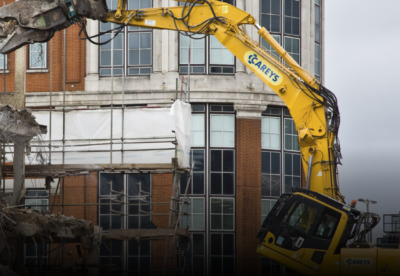Version 3 of the industry’s site operating procedures allows closer than 2m working in special circumstances that are essential to project delivery.
The new Construction Leadership Council guidance recommends that where close working cannot be avoided its should be limited to less than 15 minutes and workers should be side by side rather than face to face.
The use of respiratory protective equipment should be used as a last resort in the hierarchy of mitigation measures.
More detailed guidance is now available for those who have no option but to share transport to work.
Contractors are told to put in place effective arrangements for monitoring and reviewing their compliance with the HSE now confirmed as the enforcing authority.
The latest update to SOP follows Public Health England guidance for construction sites. This states: “where it is not possible to follow the social distancing guidelines in full in relation to a particular activity, you should consider whether that activity needs to continue for the site to continue to operate, and, if so, take all the mitigating actions possible to reduce the risk of transmission”.
Hierarchy of Controls
| Eliminate |
|
| • Unwell workers with symptoms should not travel to or attend the workplace |
|
| • Rearrange tasks to enable them to be done by one person, or by maintaining social distancing measures (2m) |
| • Avoid skin to skin and face to face contact |
|
| • Stairs to be used in preference to lifts or hoists, consider one-way systems |
|
| • Consider alternative or additional mechanical aids to reduce site meetings |
|
| • Only absolutely necessary meeting participants should attend |
|
| • Attendees should be at least two metres apart from each other |
|
| • Rooms should be well ventilated / windows opened to allow in fresh air |
|
| • Consider holding meetings in open areas where possible |
|
| Reduce |
|
| Where the social distancing measures (2 metres) cannot be applied |
|
| • Minimise frequency and time workers are within 2 metres of each other |
|
| • Minimise the number of workers involved in these tasks |
|
| • Workers should work side by side, or facing away from each other, rather than face to face |
|
| • Lower the worker capacity of lifts and hoists to reduce congestion and contact at all times |
|
| • Regularly clean common touchpoints, doors, buttons, handles, vehicle cabs, tools, equipment etc. |
|
| • Increase ventilation in enclosed spaces |
|
| • Workers should wash their hands before and after using any equipment |
|
| Isolate |
|
| Keep groups of workers that have to work within 2m |
|
| • Together in teams e.g. (do not change workers within teams) |
|
| • As small as possible |
|
| • Away from other workers where possible |
|
| Control |
|
| Where face to face working is essential to carry out a task when working within 2m |
|
| • Keep this to 15 minutes or less where possible |
|
| • Consider introducing an enhanced authorisation process for these activities |
|
| • Provide additional supervision to monitor and manage compliance |
|
| PPE |
|
| Sites should not use RPE for Coronavirus where 2m distancing guidelines are met. |
|
| • Where not possible to maintain a 2m distance, each activity must be risk assessed using the hierarchy of controls and against any sector-specific guidance, mindful that masks (RPE) are the last resort |
|
| • Re-usable PPE should be thoroughly cleaned after use and not shared |
|
| • Single-use PPE should be disposed of so that it cannot be reused |
|
| • Where personnel are required to work in specific environments (e.g. where persons are shielding, with symptoms, or confirmed Coronavirus cases may be present e.g. healthcare or in a home environment) additional PPE should be considered specific to the Coronavirus risk |
|
| Behaviours |
|
| The measures necessary to minimise the risk of spread of infection rely on everyone in the industry taking responsibility for their actions and behaviours. |
|
| Encourage an open and collaborative approach between workers and employers on site where any issues can be openly discussed and addressed. |
|
Click for Site Operating Procedures guidance document

.gif)




.gif)




















 (300 x 250 px).jpg)




























